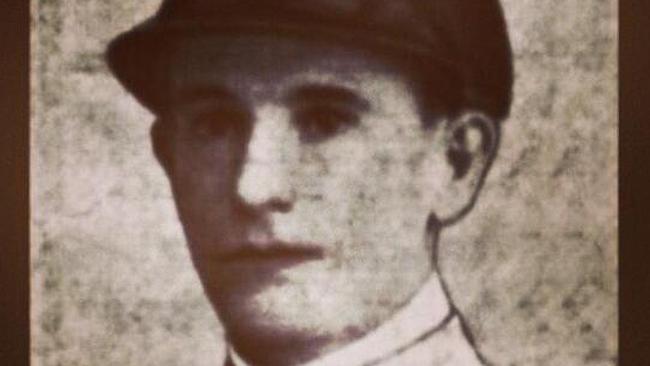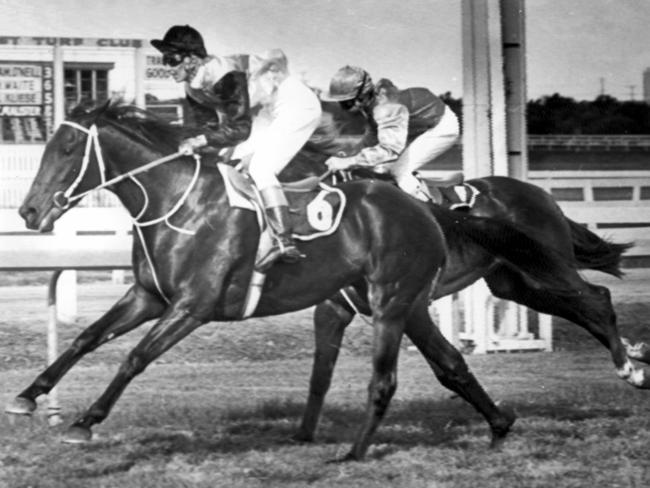Story behind Australia’s first female jockey
LIVING her entire life under a different identity, it wasn’t until her death that the harrowing truth about Australia’s first female jockey was revealed.

SuperRacing
Don't miss out on the headlines from SuperRacing. Followed categories will be added to My News.
THE story of Australia’s first female jockey is as sad as it is intriguing.
With racing licences for women not legalised until 1979, the early history of the sport remained largely monopolised by men.
However one jockey, living under the alias “Bill Smith”, would posthumously defy such regulations to later become known as the country’s first woman to race among men.
Wilhemena Smith, born in 1886, grew up an orphan in Western Australia, abandoned by her father as an infant. Smith spent the majority of her childhood on the West Coast, and allegedly began dressing as a man at the young age of 16 in order to find work.
Finding employment on a cargo vessel, Smith eventually found her way to Cairns, where she began her career working with horses and cattle in a local stable.
The exact date of her first official race dressed as a man is uncertain, however it is suspected Smith took her alias from a famed rider of the same name.
First records of a jockey by the name of William Smith show the champion rider W H Smith, who in the early 1900s won a handful of racing’s top accolades, including a Caufield Cup and a Victorian Oaks title.
According to a report from The Advertiser at the time, this particular rider died as a result of injuries sustained during a race in March 1914.
Somewhere along the way, the records of the original William H Smith, and that of Wilhemena “Bill” Smith, became blurred.

“Bill” Smith held legally recognised licences as a trainer and jockey during the 1940s and ’50s, racing tracks in far north Queensland, and making regular appearances at the Cannon Park Racetrack in Cairns.
Described by former trainer John Brady as “only an average jockey”, Smith allegedly kept very much to herself, failing to establish friendships with many among the racing community.
Attracting the nickname “Girlie” for her refusal to change in front of other jockeys, she led a life solely focused on fulfilling her passion for racing.
“The other jockeys all called him ‘Girlie’ because he’d always come to the races with the silks on under his clothes,” Brady told Phil Purser of justracing.com.au in a study of the storied rider.
“I remember he trained two horses — one was called Nor East and the other was a chestnut horse called Sydney Two.”
Reports from those who knew “Bill” claimed she was a shy person, one who would keep to herself, and most poignantly, one who sounded very much like a woman.
Such behaviour raised suspicion among the Cairns racing community.
A report by Phil Purser detailed that a number of former members of the Cannon Park racetrack were convinced Smith was a woman, but had no way of proving such allegations.

“We all thought Bill was a woman — we were convinced — but we had no proof. He had big hips like a woman and a voice like a woman. One day when I was about 17 (1945), myself and a mate Robert (Jock) Rookwood waited for Bill to go to the outside shower. It had holes in the tin structure around the shower and we were going to find out once and for all,” McDonald told justracing.com.au.
“You wouldn’t believe it, but just as we were about to get our eye up to the hole, a voice bellowed out, ‘You boys looking for something?’ Well, we nearly died and got out of there!”
Even after her retirement from the sport, Smith kept her secret concealed. It wasn’t until her death in 1975 as an 88-year-old that the racing community was notified that she was in fact female.
Smith is now buried in Herberton Cemetery in Cairns.
While the likes of Australian jockey Pam O’Neill and New Zealand’s Linda Jones led the fight for women to be given the right to hold licences and race against men until their legalisation in 1979, Wilhemena Smith was pioneering female jockeying some 30 years prior — they just didn’t know it.
Originally published as Story behind Australia’s first female jockey



